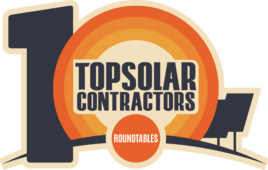This webinar was presented live on Wednesday, September 18, 2019. Click below to watch it on demand.
 Trojan Battery and Morningstar Corporation will collaborate to bring you an informative webinar on comparing battery technologies and peripherals for your solar energy installations. This learning session will focus on the batteries and charging options available for solar applications and explaining the benefits of each type so that you can make an educated decision on what components your next solar energy system should consist of. Real world scenarios will be explored as they make sense to specific installation types. They will focus on the characteristics of every type of solution and how they translate into saving you time and money.
Trojan Battery and Morningstar Corporation will collaborate to bring you an informative webinar on comparing battery technologies and peripherals for your solar energy installations. This learning session will focus on the batteries and charging options available for solar applications and explaining the benefits of each type so that you can make an educated decision on what components your next solar energy system should consist of. Real world scenarios will be explored as they make sense to specific installation types. They will focus on the characteristics of every type of solution and how they translate into saving you time and money.
Attendees of this webinar will:
- Learn the difference between battery types and the peripherals that support your solar energy system
- Understand the benefits that each type of technology will bring to your business
- Learn the importance of maintenance and understand how these components contribute to energy efficiency
Featured Speakers:

Sr. Applications Engineer
Trojan Battery Company

Inside Sales Representative
Morningstar Corp.

Moderator
Editor in Chief, Solar Power World




The old tried and proven Edison cell or Ni-Fe battery is very expensive has a round trip efficiency of around 65% and cannot be allowed to run dry, automatic watering is needed for reliability. It can be refurbished by replacing the KOH electrolyte every few years and can be rebuilt for decades of service.
Over the past several years, lead/acid battery manufacturers have been forced to fine tune their manufacturing and assembly lines for better battery reliability. New chemistries like the Firefly Energy carbon foam lead AGM batteries are more rugged than standard lead/acid designs and can take more abuse than accepted lead/acid deep cycle designs. There is a company that ‘claims’ they have a sulfuric acid replacement for lead/acid batteries that allows deeper cycling of the battery, almost eliminating the sulphation many lead/acid batteries die from. The company and product is called Tydrolyte. The claims sound incredible, as the principles say you just use tydrolyte instead of acid in a standard lead/acid battery to make it work better and longer. Some of the claims made on their web site seem to be “to good to be true.” Until I can find someone who is using the technology in the real world, I’m filing this one under (vaporware).
What is the best battery for minus 40 degree conditions in winter months
Craig, put the batteries in a dense insulated vault, using something like urethane foam insulation. Put in a Vanadium redox flow battery typical operating temperature -35 to 50 degrees C. You could use Lithium Titanate battery technology typically -10 to 60 degrees C. Both of these technologies can last 20 plus years, the redox can be discharged 100%, then recharged again, while the LTO should be kept at a depth of discharge of no more than 80%, 70% would be better.